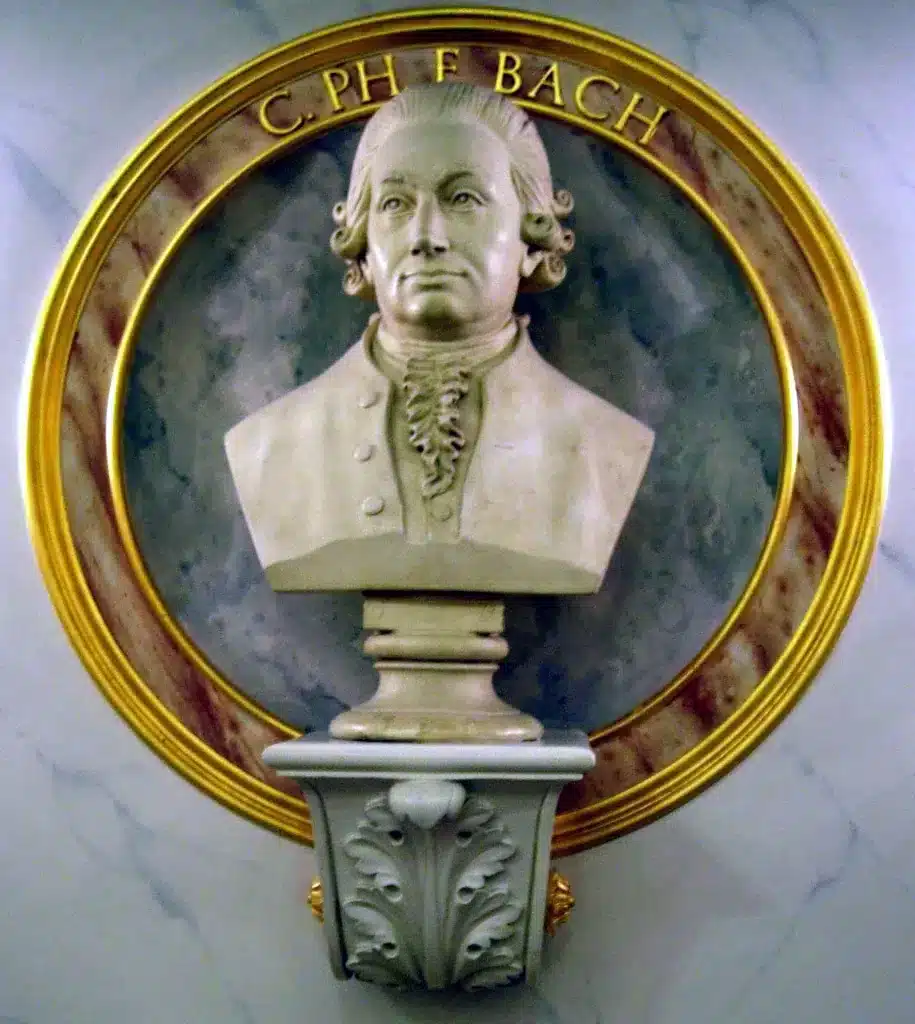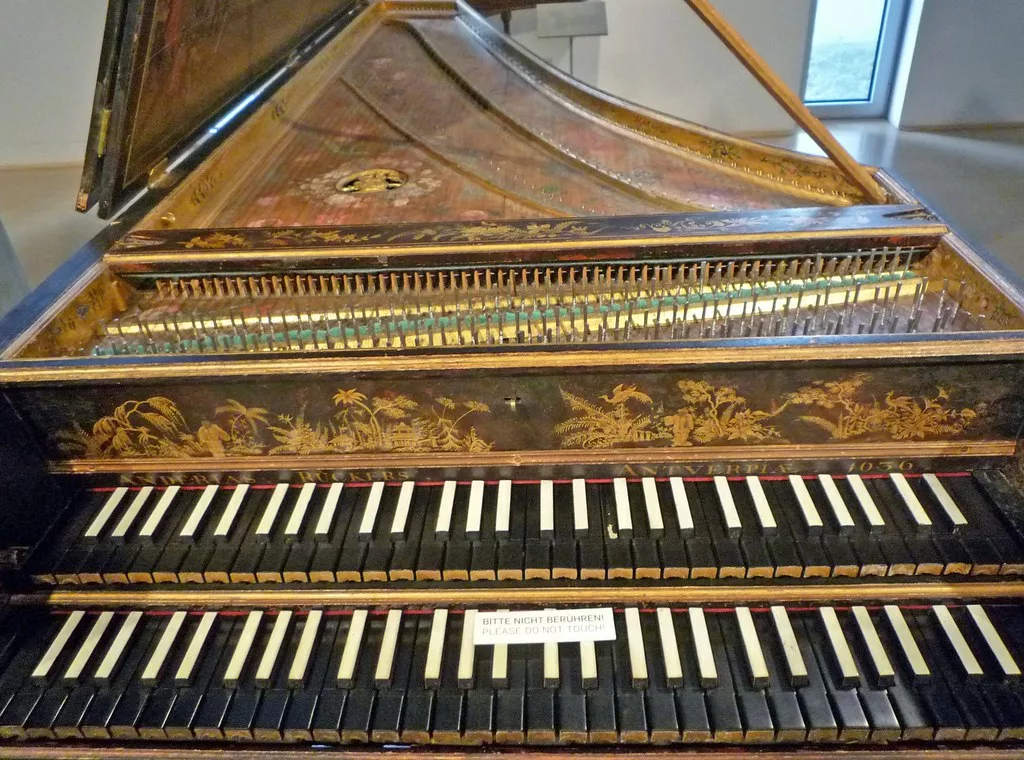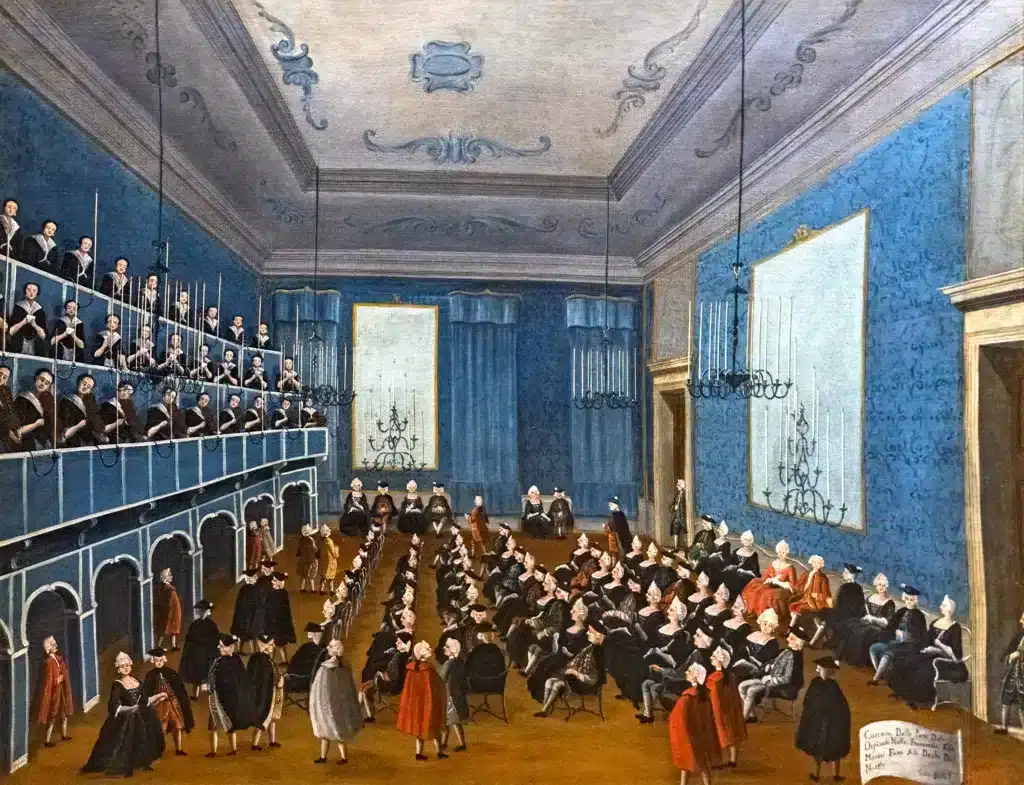In classical music, where melodies dance, and harmonies sing, one name stands out like a shining beacon: Carl Philipp Emanuel Bach. Often overshadowed by the colossal legacy of his father, Johann Sebastian Bach, Carl’s musical genius uniquely shines in a tapestry of artistic innovation and emotional depth.
In a world where notes become brushstrokes and symphonies turn into living paintings, we now have more opportunity than ever to rediscover the compositions of Carl Philipp Emanuel Bach. Imagine a musical landscape in which every phrase tells a story, every chord evokes an emotion, and every crescendo ignites the soul.
The works of Carl Philipp Emanuel Bach transcend mere notes on a page; they are living, breathing entities that invite listeners to embark on a journey of discovery and wonder. With a palette of sounds as vibrant as a painter’s colors, Bach weaves intricate tapestries of melody and harmony that resonate with both heart and mind.
The musical legacy of the Bach family
Before delving into the artistic masterpieces of Carl Philipp Emanuel Bach, it is essential to understand the rich musical heritage from which he emerged. The Bach family is renowned for producing several generations of outstanding musicians, of whom Johann Sebastian Bach is the most prominent figure. Born in Weimar on March 8th, 1714, Carl was the second surviving son of Johann Sebastian and Maria Barbara Bach (the fifth overall).
Under his father’s guidance, Carl received a comprehensive musical education that laid the foundation for his future compositions. The influence of his father’s teachings can be felt in his works, as he inherited Johann Sebastian’s meticulous attention to detail and technical skill.
However, Carl Philipp Emanuel Bach was not content with following in his father’s footsteps. He has tried to carve out his unique path in the music world, embracing new styles and pushing boundaries. This spirit of innovation would come to define his artistic legacy.

Carl Philipp Emanuel Bach: a pioneer of the classical era
Carl Philipp Emanuel Bach was essential in bridging the gap between the Baroque and Classical eras. As one of the key figures of this transitional period, he introduced elements that would shape classical music for generations to come. He, along with his brother Johann Christian, is considered the one who opened the door to classicism, which would shortly after that find its full fruition in Haydn and Mozart.
Expressive melodies and intricate harmonies characterized Bach’s compositions. He embraced a more subjective and emotional approach to music, moving away from the rigid contrapuntal style prevalent in his father’s time.
His works displayed a newfound freedom and individuality, resonating with European audiences. As a court musician of Frederick II of Prussia, he had ample opportunities to experiment with different musical forms and techniques.
The influence of sensitivity in Bach’s compositions
Sensitivity was at the heart of Carl Philipp Emanuel Bach’s compositions. His music reflected the changing cultural landscape of the time, emphasizing personal expression and emotional depth.
One of the distinguishing features of Bach’s compositions was the use of unexpected harmonic progressions and sudden changes in dynamics. These elements added a sense of unpredictability and intensity to his music, captivating listeners and evoking a wide range of emotions.
Bach’s sensitivity also extended to the use of ornaments and embellishments. He used these techniques to enhance the expressiveness of his melodies, infusing them with a sense of passion and vitality.
Keyboard sonatas: revealing Bach’s expressive depth
Among Carl Philipp Emanuel Bach’s most famous works are his keyboard sonatas. These compositions show his instrument mastery and glimpse the expressive depth he could achieve.
The keyboard sonatas exhibit a remarkable range of emotions, from tender melancholy to exuberant joy. Bach’s innovative approach to form and structure allowed him to explore different moods within a single piece, creating a captivating musical journey for the listener.
His use of contrasting themes and intricate harmonies adds complexity and depth to these sonatas. Each movement unfolds as a story with its unique character and narrative arc.

Symphony No. 1 in E-flat major: an analysis of emotion and structure
Symphony No. 1 in E-flat Major (H. 663, WQ 183/1) is an example that showcases Carl Philipp Emanuel Bach’s ability to blend emotion and structural refinement. This symphony exemplifies his move away from the traditional Baroque style toward the emerging classical aesthetic.
Bach masterfully weaves together contrasting themes, switching seamlessly between moments of grandeur and introspection. The symphony is characterized by its dynamic changes, unexpected harmonic choices, and rich orchestration.
By carefully balancing emotion and structure, Bach creates an intellectually stimulating symphony that is emotionally evocative. It serves as a testimony to his innovative spirit and contribution to the development of classical music.
The legacy of C.P.E. Bach: impact on classical music composition
Carl Philipp Emanuel Bach’s artistic legacy goes far beyond his compositions. His innovative approach to musical composition influenced countless composers who came after him, leaving an indelible mark on the landscape of classical music.
Its emphasis on individual expression and emotional depth paved the way for the Romantic era, where composers sought to evoke intense emotions through their music. Figures such as Ludwig van Beethoven and Franz Schubert drew inspiration from Bach’s works, incorporating his expressive techniques into their compositions.
Bach’s influence also extended to the development of musical forms. His exploration of new harmonic possibilities and structural innovations laid the foundation for future composers to cross boundaries and experiment with different musical ideas.
Brilliance of chamber music: an examination of the string quartets of C.P.E. Bach
In addition to his keyboard sonatas and symphonies, Carl Philipp Emanuel Bach composed a significant body of chamber music, including string quartets. These works show his mastery over smaller ensembles and highlight his ability to create intricate dialogues between instruments.
Bach’s string quartets are characterized by their melodic inventiveness, contrapuntal interplay, and expressive use of dynamics. Each instrument has its voice within the ensemble, engaging in a musical conversation that weaves harmonically rich textures.
These chamber works offer a glimpse into Bach’s ability to create intimate musical moments that resonate with listeners on a deep level. They exemplify his gift of creating melodies that touch the heartstrings while maintaining a sense of intellectual rigor.
Rediscovering the vocal works of C.P.E. Bach: cantatas and oratorios
While Carl Philipp Emanuel Bach is often celebrated for his instrumental compositions, his vocal works deserve just as much recognition. His cantatas and oratorios show his ability to marry music with text, creating powerful narratives that transcend language barriers.
Bach’s vocal compositions display a wide range of emotions, from the triumphant exultation of praise to the depths of sorrow and despair. His use of vocal techniques such as recitative and aria allows for a nuanced exploration of the text, bringing it to life through music.
These works demonstrate Bach’s ability to create melodies that perfectly complement the meaning and emotion behind the words. Through his vocal compositions, he invites listeners to experience profound moments of introspection and spiritual contemplation.

C.P.E. Bach’s contribution to music theory and performance techniques
In addition to his skill as a composer, Carl Philipp Emanuel Bach significantly contributed to music theory and performance techniques. He wrote treatises on keyboarding, improvisation, and composition that continue to be studied by musicians today.
Bach’s treatises provide valuable insights into the musical practices of his time. He advocated a more expressive approach to performance, encouraging musicians to imbue their interpretations with emotion and individuality.
His theories on harmony also had a lasting impact on future generations of composers. Bach explored new harmonic possibilities, expanding the tonal palette available to composers of later eras.
Conclusion: the enduring artistic legacy of Carl Philipp Emanuel Bach
Carl Philipp Emanuel Bach’s artistic masterpieces continue to captivate audiences with their emotional depth, technical brilliance, and innovative spirit. His contributions as a composer, performer, and theorist have left an indelible mark on classical music.
From keyboard sonatas to symphonies, chamber music to vocal works, Bach’s compositions display a unique blend of sensitivity and structural refinement. His ability to evoke a wide range of emotions through music remains unparalleled.
As we explore the musical legacy of the Bach family, it becomes clear that Carl Philipp Emanuel Bach’s artistic legacy deserves recognition and celebration. His works continue to inspire and enchant music lovers worldwide, amplifying the magic of classical music for generations to come.
If you like this post, you can always donate to support my activity! One coffee is enough!

